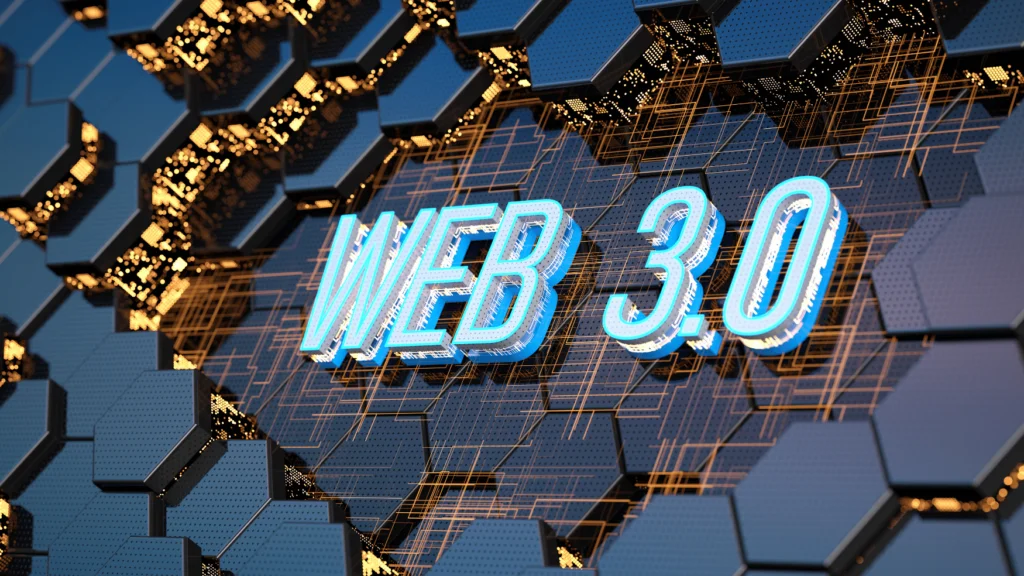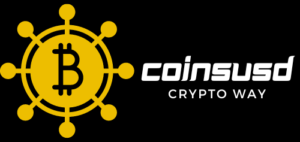Table of Contents

How To Get Started With Web3. Did you know that the Web3 market is expected to reach a staggering $10 trillion by 2030? This rapid growth signals a major shift in how we interact with the internet, offering new opportunities for innovation and financial empowerment.
Overview of Web3
Web3 represents the next evolution of the internet, moving from centralized platforms (Web2) controlled by a few major corporations to a decentralized network where users have more control. It’s built on blockchain technology, which allows for secure, transparent, and tamper-proof transactions. Unlike Web2, where data is owned by companies, Web3 empowers individuals to own and control their data and digital assets.
This article aims to guide beginners through the exciting world of Web3. We’ll provide practical advice on setting up a crypto wallet, interacting with decentralized applications (dApps), and understanding key tools and platforms like Metamask, IPFS, and ENS.
Understanding Web3
Definition
Web3 is a decentralized version of the internet that uses blockchain technology to create a more secure and user-controlled environment. Key concepts include:
- Decentralization: Removing central authorities and distributing control across a network.
- Blockchain: A digital ledger that records transactions across many computers in a way that ensures security and transparency.
- Smart Contracts: Self-executing contracts with the terms of the agreement directly written into code.
Benefits
Web3 offers several benefits over traditional Web2:
- User Control Over Data: Users own their data and digital identities.
- Enhanced Security: Blockchain technology provides robust security features, reducing the risk of data breaches and fraud.
- New Economic Models: Web3 enables new ways of earning and spending money, such as decentralized finance (DeFi) and non-fungible tokens (NFTs).
Setting Up a Crypto Wallet
What is a Crypto Wallet?
A crypto wallet is a digital tool that allows you to store, send, and receive cryptocurrencies. It’s essential for interacting with Web3 because it holds your digital assets and keys, enabling secure transactions on the blockchain.
Choosing a Wallet
There are different types of crypto wallets, each with its own advantages:
- Hardware Wallets: Physical devices that store your private keys offline, providing high security. Recommended for long-term storage.
- Software Wallets: Applications or browser extensions that store your keys online. These are more convenient for daily use.
- Mobile Wallets: Wallets designed for smartphones, combining convenience with security features.
For beginners, a software wallet like Metamask is a good starting point due to its ease of use and integration with many apps.
Step-by-Step Guide: Setting Up Metamask
- Download and Install: Go to the Metamask website or your browser’s extension store and download the Metamask extension.
- Create a Wallet: Open Metamask and click “Create a Wallet.” Follow the prompts to set up a new wallet.
- Secure Your Wallet: Write down your seed phrase (a series of 12-24 words) on paper and store it in a safe place. This is crucial for recovering your wallet if you lose access.
- Add Funds: You can buy cryptocurrency directly through Metamask or transfer funds from another wallet or exchange.
- Start Using dApps: Connect your Metamask wallet to decentralized applications by clicking on the “Connect Wallet” button on supported dApp websites.
Interacting with Decentralized Applications (dApps)
What are dApps?
Decentralized applications, or dApps, are applications that run on a blockchain network rather than on centralized servers. Unlike traditional apps, which are controlled by a single entity, dApps are open-source, operate autonomously, and have their data and operations stored on a blockchain. This makes them more secure, transparent, and resistant to censorship.
Finding dApps
To start exploring dApps, you can visit popular dApp directories such as:
- DappRadar: A comprehensive platform that lists and ranks dApps based on various metrics like active users, transaction volume, and more.
- State of the dApps: Another directory that provides detailed information about different dApps, including categories like DeFi, gaming, and social.
These directories make it easy to discover new and popular dApps across different blockchains.
Using dApps
Here’s a step-by-step guide on how to connect your wallet to a dApp and start using it. We’ll use Uniswap, a popular decentralized exchange, as an example.
- Open Metamask: Make sure your Metamask wallet is installed and set up.
- Visit Uniswap: Go to the Uniswap website (https://uniswap.org/).
- Connect Wallet: Click on the “Connect Wallet” button. Choose Metamask from the list of supported wallets.
- Approve Connection: A Metamask popup will appear, asking you to approve the connection. Click “Next” and then “Connect.”
- Start Trading: Once your wallet is connected, you can start trading tokens. Select the tokens you want to swap, enter the amount, and follow the prompts to complete the transaction.
Key Tools and Platforms
Metamask
Metamask is a popular crypto wallet that allows users to interact with the Ethereum blockchain and other compatible networks. It can be installed as a browser extension or mobile app, providing a convenient way to manage your digital assets and connect with dApps.
Features:
- Securely store and manage your crypto assets.
- Easily connect to dApps and sign transactions.
- Supports multiple networks beyond Ethereum, like Binance Smart Chain and Polygon.
Basic Tutorial:
- Install Metamask: Download from the official Metamask website or your browser’s extension store.
- Set Up a Wallet: Create a new wallet and securely store your seed phrase.
- Add Funds: Transfer crypto from another wallet or buy directly through Metamask.
- Connect to dApps: Visit a dApp website and click “Connect Wallet” to start interacting.
IPFS (InterPlanetary File System)
IPFS is a decentralized storage protocol that allows users to store and share files across a distributed network. Unlike traditional cloud storage, where data is stored on central servers, IPFS uses a peer-to-peer network to distribute data.
Basic Guide:
- Install IPFS: Download and install IPFS from the official website.
- Add Files: Use the IPFS command line or desktop app to add files to the network.
- Get a CID: Each file is assigned a unique Content Identifier (CID) that can be used to retrieve the file.
- Access Files: Use the CID to access your files from anywhere on the IPFS network.
ENS (Ethereum Name Service)
ENS simplifies blockchain addresses by allowing users to register human-readable names (e.g., yourname.eth) instead of long, complex addresses. This makes it easier to send and receive crypto and interact with dApps.
Tutorial:
- Visit ENS: Go to the ENS app (https://app.ens.domains/).
- Search for a Name: Enter the name you want to register and check its availability.
- Register the Name: Follow the on-screen instructions to register your name, paying the required fees.
- Use the Name: Once registered, you can use your ENS name instead of your wallet address for transactions and dApp interactions.
Staying Safe in Web3
Security Best Practices
- Protect Private Keys: Never share your private keys or seed phrases. Store them offline in a secure place.
- Recognize Scams: Be wary of phishing attempts and only interact with trusted dApps and services.
- Use Secure Wallets: Choose reputable wallets like Metamask, and enable two-factor authentication if possible.
Common Pitfalls to Avoid
- Avoid Reusing Passwords: Use unique passwords for each service and consider a password manager.
- Double-check Transactions: Always verify transaction details before confirming.
- Stay Informed: Keep up-to-date with the latest security practices and be cautious of too-good-to-be-true offers.
Continuing Your Web3 Journey
Learning Resources
To deepen your understanding of Web3, here are some excellent resources:
- Blogs: Follow blogs like CoinDesk, The Defiant, and Bankless for the latest news and insights.
- Courses: Enroll in online courses such as Coursera’s Blockchain Basics or Udacity’s Blockchain Developer Nanodegree to gain structured learning.
- Community Forums: Join forums like Reddit’s r/ethereum and CryptoCompare to ask questions and engage with the community.
Getting Involved
Engaging with the Web3 community can accelerate your learning and help you stay updated:
- Social Media Groups: Follow Web3 influencers and join groups on platforms like Twitter and Discord. Look for hashtags like #Web3, #DeFi, and #Crypto.
- Webinars and Meetups: Attend online webinars and local meetups to network and learn from experts. Websites like Meetup often list blockchain and crypto events.
- Hackathons: Participate in hackathons, such as those organized by ETHGlobal, to collaborate on projects and solve real-world problems.
Conclusion
In this guide, we’ve covered the basics of Web3, including what it is, its benefits, and how to get started. We walked you through setting up a crypto wallet, using decentralized applications, and key tools like Metamask, IPFS, and ENS. We also provided tips for staying safe and offered resources to continue your learning journey.
Taking your first steps into Web3 might seem daunting, but remember that every expert was once a beginner. As you explore and interact with this new technology, you’ll find that it becomes more intuitive and rewarding.
We invite you to share your experiences, ask questions, and connect with us for more Web3 content. Your journey is just beginning, and the Web3 community is here to support you. Dive in, explore, and discover the future of the internet!

